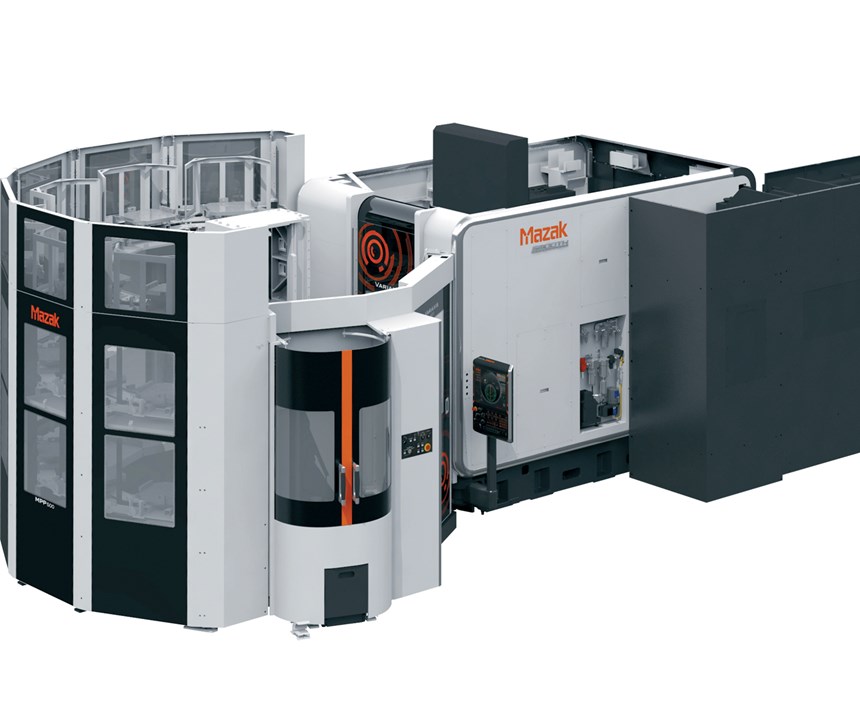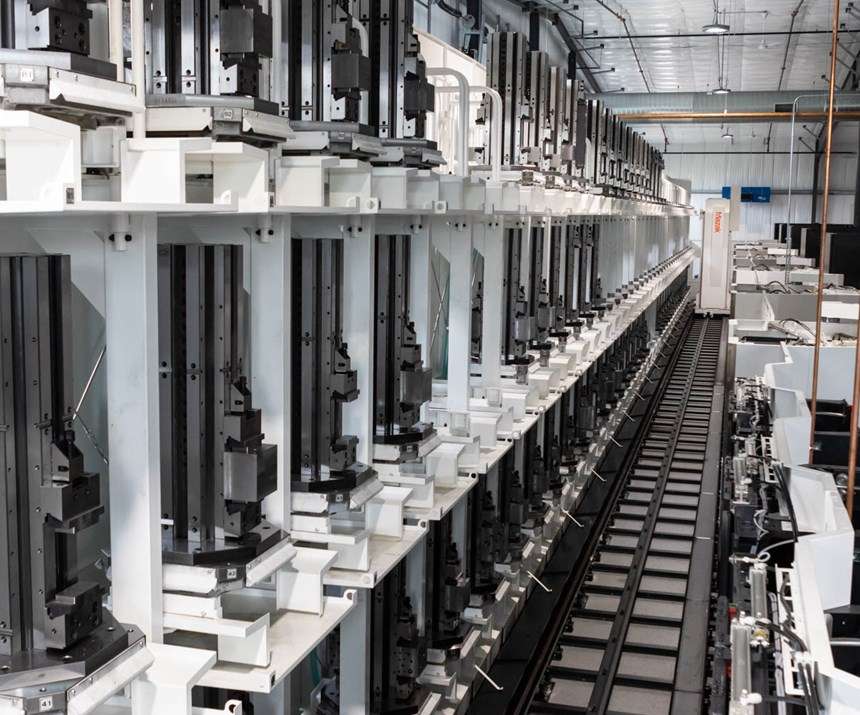Job Shop Automation: Fast, Simple and Agile
When done right, automation can provide important benefits. Here’s a look at automation options to suit the varying needs of typical job shops.
#Industry40 #basics #workforcedevelopment
The right type of automation delivers substantial benefits for job shops. The capability to increase spindle utilization and boost output of both people and machines is the most obvious, but improved part accuracy and consistency, reductions in human error and the potential for lights out production—all of which positively affect a shop’s bottom line—should not be overlooked.
Because job shops frequently produce parts in smaller and more varied job lot sizes than do larger manufacturers, these often-smaller shops face different challenges, the main one being higher amounts of job change-overs. With this factor in mind, automation best suited for job shop needs will not only emphasize fast and easy setups and reduce job change-over times to 15 minutes or less, but also be adaptable for use from one type of machine to the next.
Featured Content
Ideally, shops should plan for automation at the time of machine tool acquisitions. Machines equipped and configured for automation early on can save time and the cost of retrofitting after the fact. Such automation preparedness can include automatic doors, built-in robot interfaces and any other necessary options such as larger tooling capacities and special workholding systems. Or, if future automation needs are uncertain, shops can opt for machines that make adding automation as easy and inexpensive as possible.
Once a shop has made the decision to automate its processes, it must evaluate workpiece weight and variation as well as job batch/lot sizes to determine ideal jobs to automate. For instance, jobs that involve small batch sizes of very different part numbers are inefficient and costly in terms of automation. Conversely, high-volume-per-year jobs produced in low-to-medium-volume reoccurring batches at scheduled intervals are ideal candidates for automation, especially when there is little variation in terms of part size, processes and features. Such jobs require fewer job change-overs and have workflows that permit automated cells to run and produce as long as possible between necessary job change-overs.
On the other hand, automating for large workpieces requires careful consideration as to how those parts will be presented when loaded and unloaded from a machine tool. Shops must also determine what type of end-of-arm tooling on articulated or gantry robots will be most efficient for the larger parts. Simple fixturing can eliminate having to maneuver big parts into complex setups. In these types of production scenarios, shops should avoid multiple sequencing where parts are clamped and unclamped numerous times during processing.
Maximizing automation utilization and helping to justify its cost requires careful consideration of how machining cycle times effect up and downstream processes. For instance, when machining large parts with longer machining times, shops can integrate a robot to perform other tasks within peripheral processes while parts are being machined. This configuration may require the robot to ride on rails or travel overhead to serve those other processes and pieces of equipment, or to be positioned to tend several of the same types of machine tools running similar parts.
Eight Key Automation Considerations
Workholding: If the workpiece requires positioning in the chuck or fixture or needs to be aligned in the secondary operation based on features created in the first operation, vision systems or touch probes may be required to complete the task. Workholding solutions must also be designed to allow for proper clearance between end-of arm tooling and clamps when loading and unloading.
Gaging: If an unautomated process requires the operator to measure the workpiece during or after machining, automating the gaging process should be considered. Several in-process or post-process options are available, including touch probes, periodic artifact calibration or even use of a post-process gage or coordinate measuring machine.
Cycle times: When considering whether to automate a process, cycle times will determine the capacity/size of the queue tables and infeed/outfeed conveyors for finished workpieces. Cycle times will also be key in sequencing coordination of additional tasks required of the robot/automation, such as loading to gages, coordinating measuring machines, wash stations, or turn-over stations or simply managing/arranging incoming and outgoing materials on pallets.
Unattended process: Job shops seeking to run unattended or lights-out must ensure machine reservoirs for grease/oil lubrication and coolants are of sufficient capacity to last the duration of the unattended cycle. Likewise, chip evacuations and capacity to contain chips must be large enough to eliminate the need for human intervention throughout the entire unattended cycle. Another important precaution is to set spindle and axis overload detection to force the machine into an e-stop mode or alarm state to avoid potential for catastrophic results such as damage to the machine or scrap of expensive material or workpieces.
Tooling: Unattended automated processes necessitate excellent tool life management including predictive tool life and often redundant tooling. This is particularly true when machining hard materials such as high-temperature alloys or hardened steels.
End-of-arm tooling: Frequently, end-of-arm tooling needs vary from one operation to the next, requiring the tooling to be changed over during part production. End-of-arm tooling solutions can be designed using workpiece drawings, material dimensions and weights, sample castings or forgings.
Safety: A safety review should take place before, during and after the automation implementation project is compete and must comply with ANSI/RAI R15.06-2012 risk assessment. Securing a safe work area may require the addition of light curtains or fencing.
Monitoring: While automated operations may eliminate the need for a dedicated machine operator, they still require monitoring. Advanced connectivity, such as through MTConnect, provides the capability to remotely monitor the system as well as troubleshoot and diagnose problems.
RELATED CONTENT
-
Bar Feeder Basics
Some primary factors are often overlooked when considering how to justify the implementation of a bar feeder for turning operations.
-
Automation in High-Mix, Low-Volume Turning Applications
Turning shops are familiar with automation for high-volume work, but the shifting landscape to smaller batch sizes has created new challenges.
-
Checklist for Lights-Out Manufacturing
Many shops of various sizes are trying to hop on the lights-out bandwagon. This article looks at some things to consider and check out before “hopping.”









